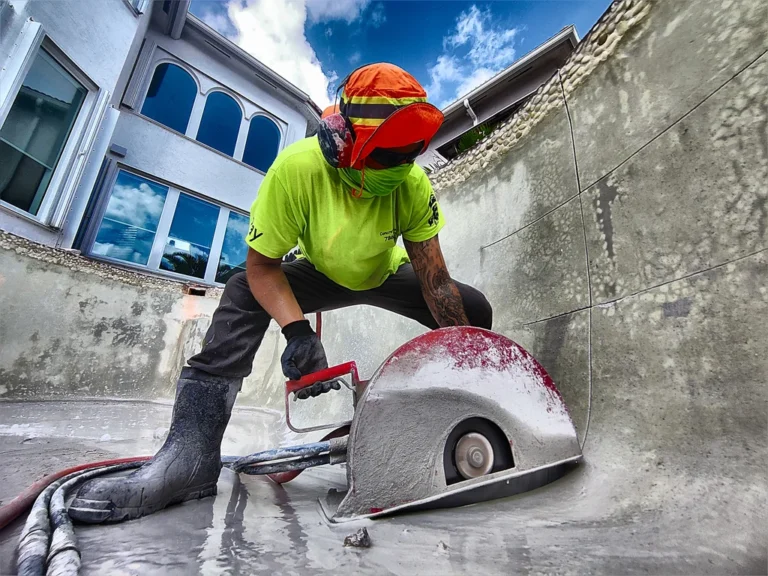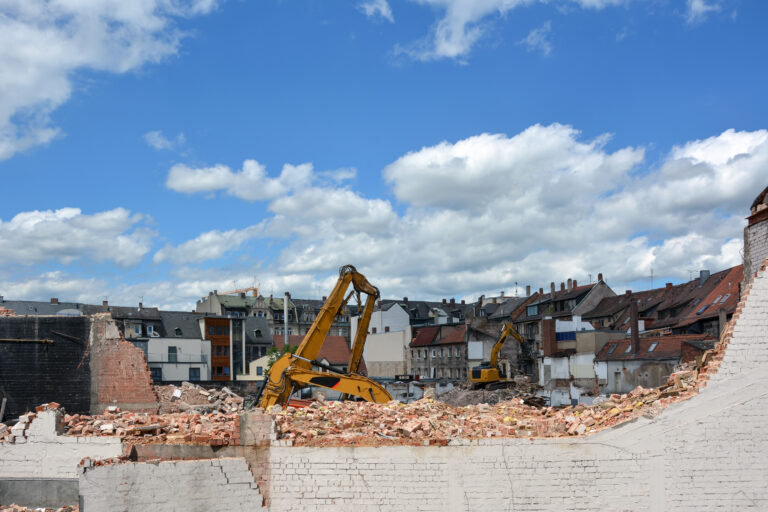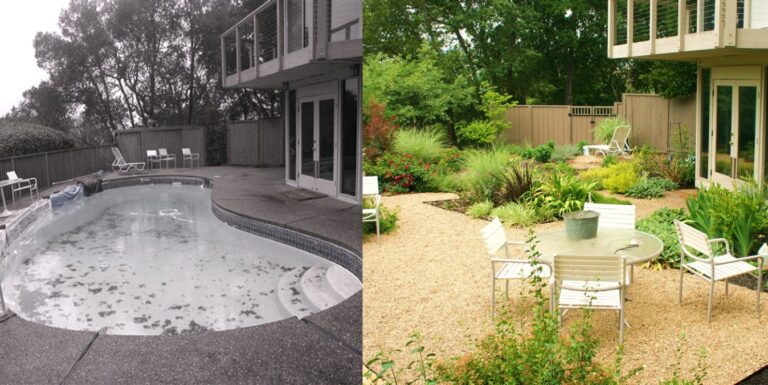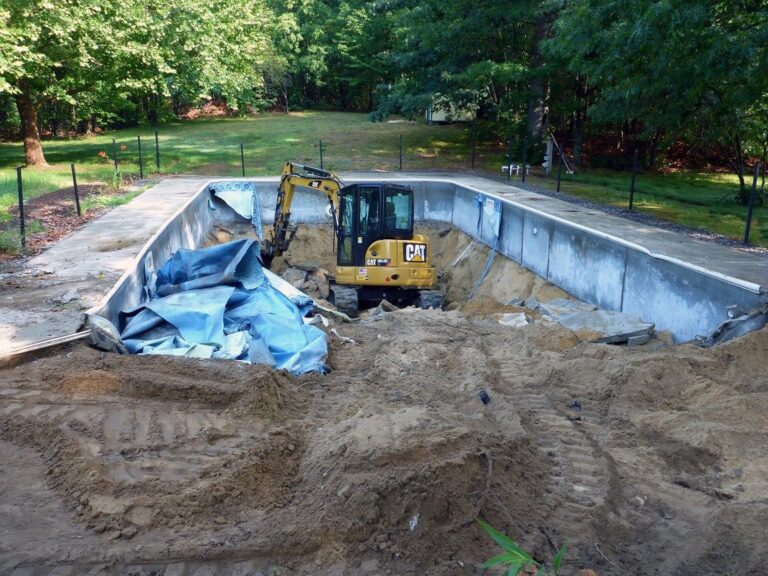How to Prepare for Pool Removal: Essential Steps for Homeowners
Removing a pool is a major decision that can change the way you use your outdoor space. Taking out the pool can increase property value and make the yard safer for everyone. Homeowners often opt for pool removal to save on maintenance costs and open up new landscaping possibilities.
As the summer ends, consider what you might do with the extra space. It can be transformed into a beautiful garden, a play area for kids, or even a new patio for gatherings. This not only enhances your home’s look but also offers practical benefits.
Safety is another major reason for pool removal. Without a pool, the risk of accidents decreases significantly, bringing peace of mind. Plus, not having to worry about fencing or covers makes maintaining the yard easier.
Planning and Legal Considerations
When preparing for pool removal, homeowners must follow local regulations and secure all necessary permits. Selecting a reputable contractor is crucial to ensure the process goes smoothly.
Understanding Local Regulations
Before starting pool removal, homeowners need to understand their local regulations. Each city or county has different rules regarding demolition. Local building codes may dictate how pool removal should be done.
Check municipal websites or contact the local building department for details. Homeowners should be aware of restrictions on disposal of pool materials. It’s important to make sure all debris is handled according to local guidelines to avoid fines.
Securing Necessary Permits
Getting the right permits is essential for pool removal. Most jurisdictions require permits to ensure safety and environmental compliance. Homeowners should contact their local building department to determine which permits are needed.
Typical permits for pool removal might include demolition permits and waste disposal permits. Make sure to submit applications promptly to avoid delays. Keeping copies of all permits is recommended in case of inspections.
Contractor Selection Process
Choosing the right contractor is a key step in pool removal. Homeowners should look for a licensed and insured professional. Checking references and reviews can help identify a reputable contractor.
It is beneficial to get multiple quotes to compare prices and services. Ensure the contractor is familiar with local codes and can handle permit applications. A good contractor will also provide a clear timeline and cost estimate for the project.
Pre-Removal Preparation
Before removing a pool, it’s essential to drain it properly, clear the surrounding area, and manage utilities and safety measures.
Pool Draining Methods
Draining the pool is the first step. Options include using a submersible pump or a standard pool pump. The submersible pump is placed at the bottom of the pool to remove water efficiently.
Don’t forget local regulations. Check with the city to understand where to send the drained water. Some areas allow draining into the sewer system, while others have strict rules.
In addition, inform your neighbors. Draining can sometimes cause flooding, which can be a problem. Make sure the water disposal is well-planned to avoid issues.
Clearing the Area and Accessibility
Clear all debris and obstacles from the pool area. This includes pool toys, furniture, and vegetation. Be sure to remove any decorations or fixtures that might be in the way.
Access to the pool for heavy equipment is crucial. Plan where the machinery will enter and exit. Wide gates help facilitate this process. If necessary, remove parts of fencing to create a clear pathway.
Be mindful of your neighbors. Inform them about the upcoming work to minimize inconvenience. This also ensures their safety during the project.
Utilities and Safety Measures
Shut off all utilities connected to the pool—water lines, electricity, and gas, if applicable. If you’re unsure, consult a professional. This prevents any potential hazards during the removal process.
Ensure safety by checking for any hidden underground utilities. Use tools like ground-penetrating radar to identify possible risks. Clear pathways stay safer for both workers and equipment.
Don’t forget safety measures like wearing protective gear. Hard hats, gloves, and goggles can protect against accidents. Keep a first aid kit nearby for any minor injuries that might occur.
By thoroughly preparing in these areas, the project will run more smoothly and safely.
The Pool Removal Process
Taking out a pool involves careful planning and execution. The main steps include choosing the right method, handling demolition and debris, and backfilling the empty space for new landscaping.
Choosing the Right Method
There are different ways to remove a pool. A key decision is whether to go for a partial or complete removal. Partial removal involves removing the top sections of the pool and filling in the rest. This method is quicker and cheaper.
Complete removal means taking out every part of the pool, including the base. This approach is more thorough and offers more options for future landscaping. It requires more labor and usually costs more.
The type of pool also matters. For example, fiberglass pools and concrete pools have different removal processes due to their materials and construction.
Demolition and Debris Removal
Demolition involves breaking up the pool structure using heavy equipment. For inground pools, this could mean breaking up concrete, fiberglass, or vinyl liners. Above ground pools are typically easier to dismantle with fewer tools involved.
Debris removal is a crucial part of the process. The broken pieces, such as concrete, need to be taken away from the site. Some materials, like metal from pool ladders or concrete, can be recycled. This step ensures the area is ready for the next phase, which involves backfilling.
Backfilling and Landscaping
Backfilling is the process of filling the hole where the pool once was. Soil and other fill materials are used to create a stable base. Proper compaction is necessary to avoid future sinking.
Once backfilled, the area can be landscaped. This might include planting grass, creating a garden space, or designing new backyard features. The choice of fill materials and landscaping elements should match the homeowner’s vision for their yard.
Making these decisions requires careful planning to ensure the area is both functional and attractive.
For more information on professional pool removal services, consider reaching out to trusted experts.
Considerations for the Future
After removing a pool, homeowners should think about how they will use the new space. New landscaping options such as gardens or flower beds can make the area more attractive and enjoyable.
Adding a backyard oasis could be another idea. Features like a water feature or greenhouse can create a peaceful escape right at home.
Property value might be affected by these changes. Removing a pool could initially lower it, but smart use of the new space can bring it back up. For example, creating a garden space or converting the pool area into an outdoor space with seating and paths can add value.
A unique option could be a pool-to-deck conversion. Changing the pool area into a wooden deck can provide a stylish and functional space for gatherings or relaxing.
When considering these options, think about:
- What fits the home’s style?
- What are the family’s needs?
These choices will help in making the best use of the available space.






